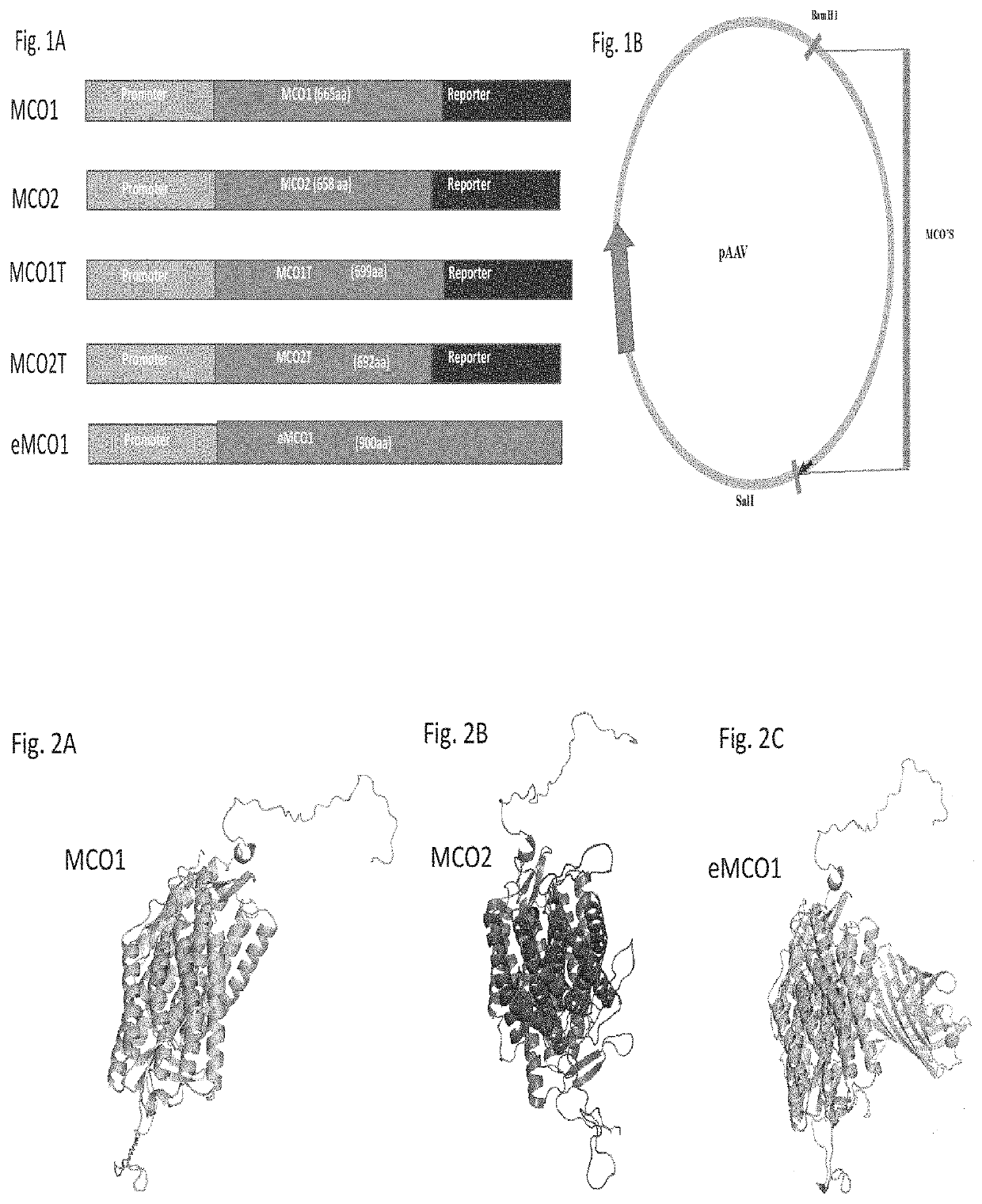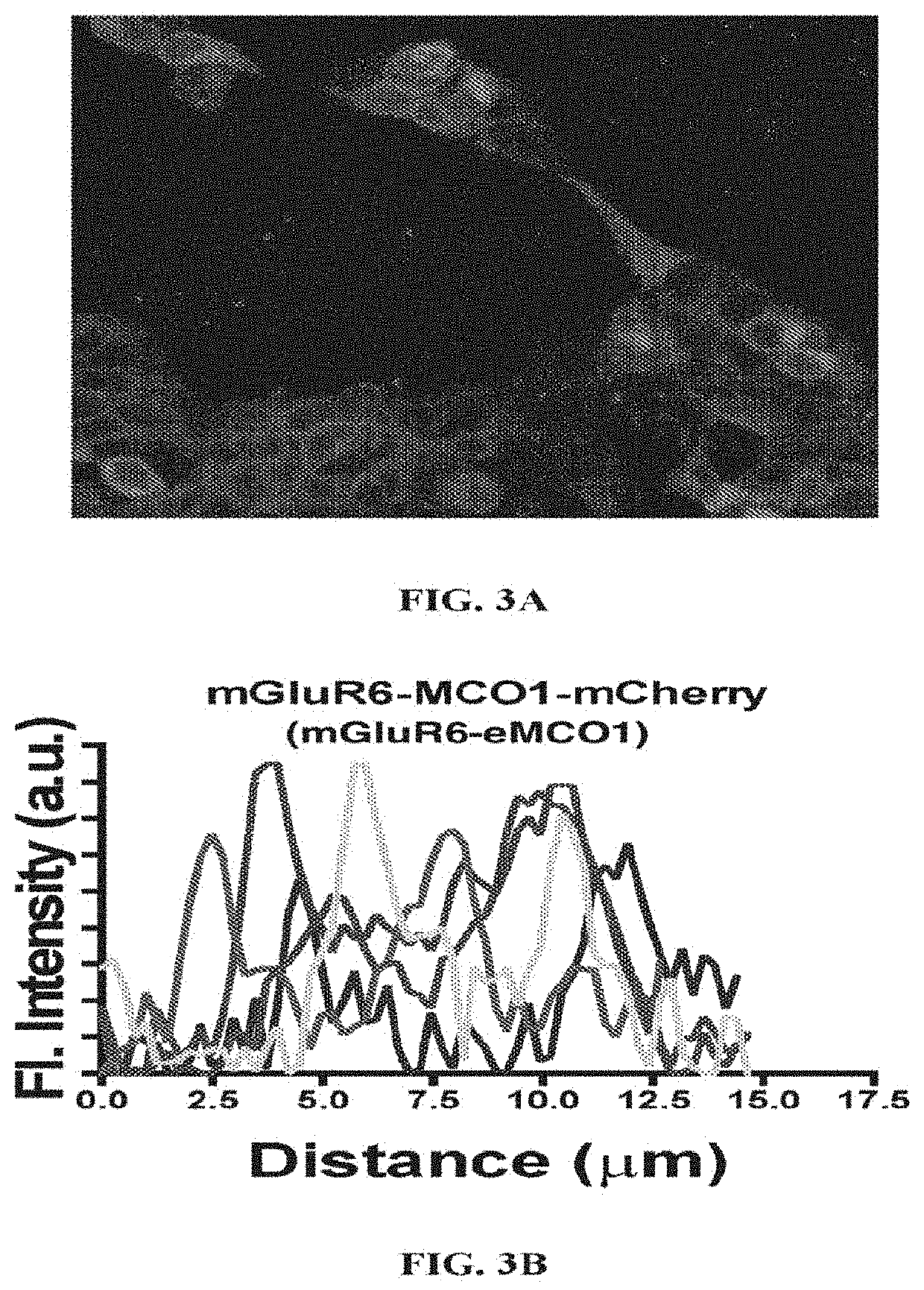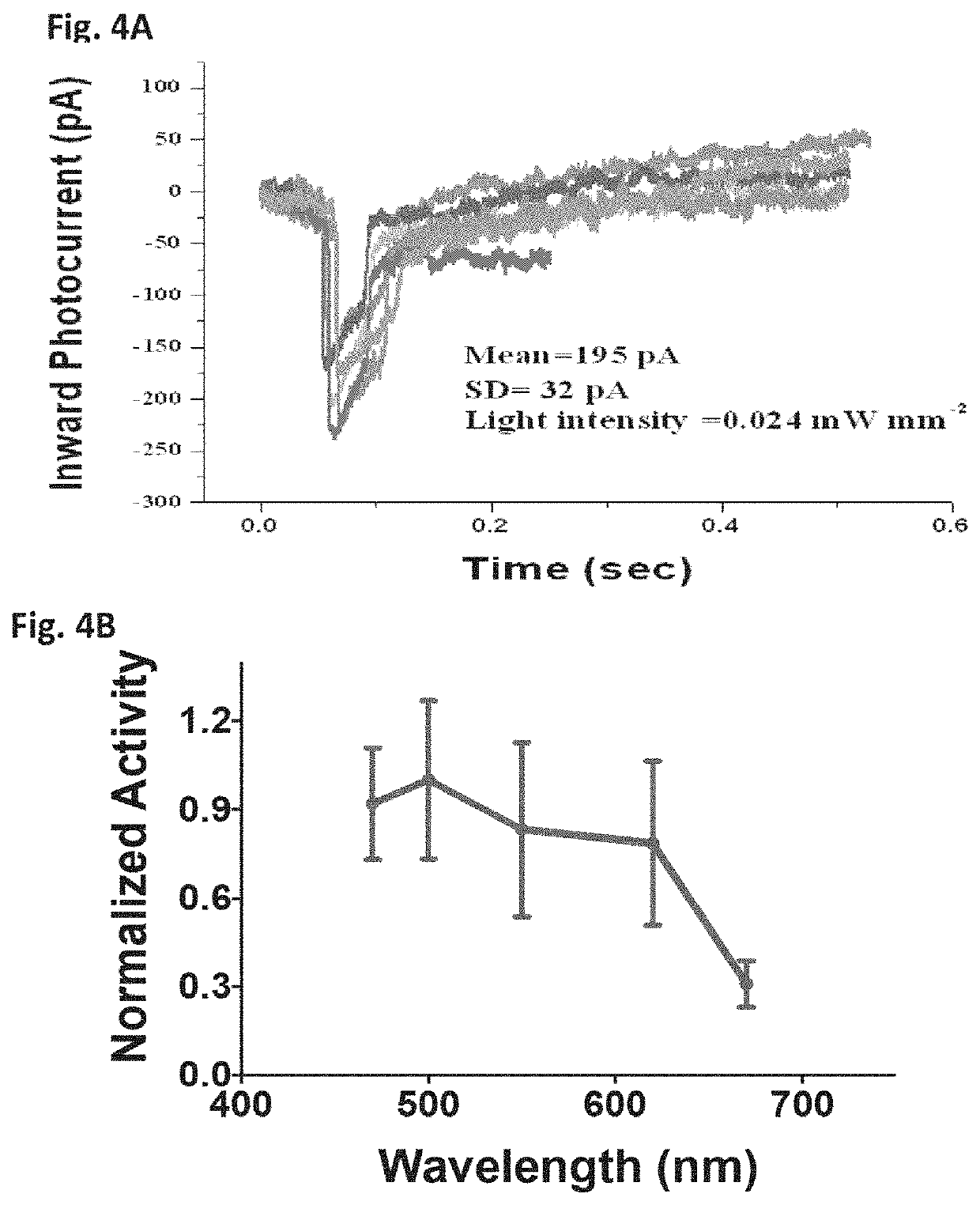Optogenetic modulation by multi-characteristic opsins for vision restoration and other applications thereof
a multi-characteristic, optogenetic technology, applied in the direction of peptide/protein ingredients, drug compositions, peptide sources, etc., can solve the problems of loss of photoreceptor cell function, reduced light sensitivity and blindness, etc., to enhance the effect of emco1, broad spectral range, and fast ligh
- Summary
- Abstract
- Description
- Claims
- Application Information
AI Technical Summary
Benefits of technology
Problems solved by technology
Method used
Image
Examples
example 1
[0115]FIG. 1A illustrates domain architecture of Multi-Characteristics Opsins (MCOs) with reporter protein. These MCOs were synthesized using A typical circular map with insertion of MCO gene cloned at the restriction sites is shown in FIG. 1B. The MCO genes were synthesized using DNA synthesizer and sequence was verified. Gel electrophoresis was carried out on amplified MCO1 gene (digested by restriction enzymes BamH I and Sal I with restriction fragments) using 0.8% agarose. Western blot was performed to confirm that the MCO is expressed in retinal cells. Retinas of mice were transfected using lipofectamine and expressed protein was extracted for western blot. Western blot was developed using primary (anti-mCherry polyclonal) antibody and secondary (Goat anti-Rabbit IgG) antibody with 1-step NBT / BCIP substrate.
example 2
[0116]FIG. 2 shows Theoretical modeling of the three-dimensional arrangement of amino acid chains of Multi-Characteristics Opsins using web-based protocol (RaptorX). The RaptorX uses a conditional neural fields (CNF), a variant of conditional random fields and multiple template treating procedure to develop the following predicted structure of MCO. FIG. 2A shows the theoretical modeling of the three-dimensional arrangement of amino acid chains of Multi-Characteristics Opsin, MCO 1. FIG. 2B depicts the theoretical modeling of the three-dimensional arrangement of amino acid chains of Multi-Characteristics Opsin, MCO 2. FIG. 2C shows the theoretical modeling of the three-dimensional arrangement of amino acid chains of Multi-Characteristics Opsin, eMCO1. The expression of the gene and functioning of the MCO1 and eMCO1 was investigated. The eMCO1 was found to fold / express in membrane better, and therefore, function effectively as compared to MCO1. In the eMCO1 design, a special element b...
example 3
[0117]For evaluating membrane trafficking of MCOs, the expression of MCOs in cell membrane (vs. cytoplasm) of transfected HEK293 cells was quantified using fluorescence intensity of reporter protein (mCherry). HEK293 cells were transfected with MCO constructs using lipofectamine 3000 (Life Technologies). After transfection, the HEK293 cells were maintained in DMEM / F-12 with 10% fetal bovine serum, 0.2 mg / mL Gentamycin in Petri dishes. The cultures were maintained at 37° C. in a 5% CO2 humidified atmosphere. Cells were incubated for 48 hours after transfection to allow MCO expression. Visualization of the reporter (mCherry) fluorescence was carried out under epifluorescence microscope. The fluorescence images of HEK293 cells expressing eMCO1(MCO1-mCherry) and MCO2-mCherry are shown in FIG. 3A and FIG. 6A respectively. Further, to quantify the relative expression of the eMCO1 in cell membrane and intracellular components, intensity profiles are plotted. FIG. 3B shows the Intensity of ...
PUM
| Property | Measurement | Unit |
|---|---|---|
| frequency | aaaaa | aaaaa |
| pH | aaaaa | aaaaa |
| voltage | aaaaa | aaaaa |
Abstract
Description
Claims
Application Information
 Login to View More
Login to View More - R&D
- Intellectual Property
- Life Sciences
- Materials
- Tech Scout
- Unparalleled Data Quality
- Higher Quality Content
- 60% Fewer Hallucinations
Browse by: Latest US Patents, China's latest patents, Technical Efficacy Thesaurus, Application Domain, Technology Topic, Popular Technical Reports.
© 2025 PatSnap. All rights reserved.Legal|Privacy policy|Modern Slavery Act Transparency Statement|Sitemap|About US| Contact US: help@patsnap.com



